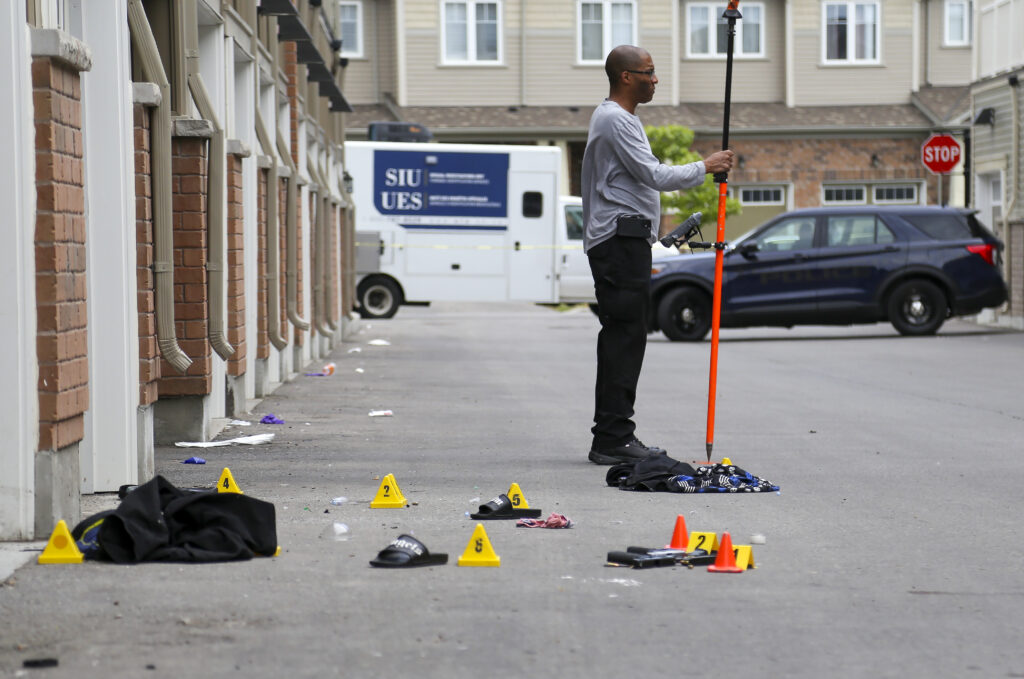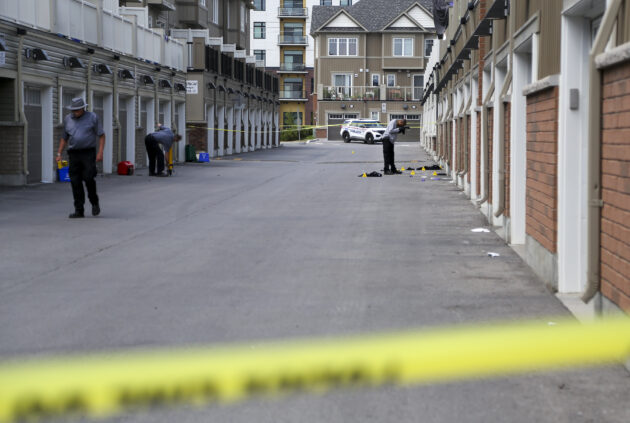
Features
Ontario’s Special Investigations Unit: Busiest year on record for police oversight
May 30, 2023 By Kristy Denette
 Photo credit: Kristy Denette
Photo credit: Kristy Denette Investigators from Ontario’s Special Investigations Unit (SIU) must always be prepared because they never know where their next call will come from. It could be anywhere from Windsor to James Bay.
“It could be a 16-hour drive or a plane ride to a scene. You need to make sure you have all the necessary equipment and a couple of days’ change of clothes,” said Paul Granton, who has been a forensic investigator at the SIU for nearly 10 years. “You need to be ready for rain, snow or any terrible conditions that may happen.”
The SIU, headquartered in Mississauga, Ont., is mandated with conducting investigations into the circumstances around serious injuries, allegations of sexual assault, firearm discharges, and deaths in cases involving police across Ontario.
Staffed with civilian investigators and separate from the province’s police services, the SIU conducts independent investigations to determine whether there are grounds to criminally charge an officer. The Special Investigations Unit Act, 2019, which came into use in 2020, expanded the SIU’s jurisdiction to include incidents involving the discharge of a firearm by the police at a person. This includes the discharge of less-lethal shotgun projectiles and Anti-riot Weapon ENfields. The addition of this new category of investigation has considerably increased the SIU’s yearly caseload. In fact, this fiscal year (2021-2022) was the busiest in the history of the SIU – at 430 cases, a 20 per cent increase in cases since the new legislation was implemented. Despite the increased caseload, the SIU remains legislated to aim to complete its investigations within 120 days. In cases where no charges are laid, the SIU Act prescribes that the Director must publish a report on the SIU website containing information, such as the reasons for both the investigation and not laying a charge, a detailed narrative of what happened, and any relevant video, audio or photographic evidence.
Central to the work of the SIU is forensics—the collection and analysis of physical evidence. The forensics team, quite often the face of the organization as they are the first to respond to any given scene, is critically important to ensure thorough investigations. In 2021-2022, the forensics team of nine certified forensic investigators and one collision reconstructionist responded to nearly half of all cases. Even though the province continues to deal with a pandemic, it has been business as usual for forensic investigators who continued to respond to scenes to document and collect vital evidence. At any given scene, the team could be taking photographs, collecting blood samples, firearms, projectiles and cartridge cases, and measuring the spaces where the incident took place. All of the forensics unit staff come from policing backgrounds as they are all trained and certified in the field through the Ontario Police College or Canadian Police College.
The SIU is the first of its kind in Canada, and Ontario remains one of the few places worldwide that has an independent civilian agency with the power to both investigate and charge officers with a criminal offence.
“At the scene, we’re gathering evidence to get to the truth, but the technology is always evolving,” said Rhonda Alcock, manager in the forensic unit at the SIU and formerly with the Halton Regional Police Service. The SIU is in the process of implementing 3D scanning technology, which will enable the SIU to capture three-dimensional representation of scenes to inspect evidence, analyze blood spatter or even bullet trajectory.

Photo credit: Kristy Denette
With the shift to increased digitization in society and policing – cellphones, body-worn cameras, various types of security cameras and the increasingly large volume of related audio and video evidence – it’s an exciting time to be in the field, Alcock said.
One of the SIU’s highest profile cases was the police shooting death of Sammy Yatim in Toronto in 2013. In that case, the evidence captured by civilian cellphone video was paramount, said Paul Granton, who was the lead forensic investigator.
As a former Niagara Regional Police Service officer, Granton said he used to process homicide scenes, not knowing what happened to the individual and having to piece together a puzzle. But now as a SIU forensic investigator, he describes it as knowing a lot of the answers but having to verify the information. “It’s not a whodunit – we know who did it,” he said.
Prior to the establishment of the SIU in 1990, police services investigated their own officers in Ontario, or in some instances, another police service was assigned to conduct the investigation. The SIU is the first of its kind in Canada, and Ontario remains one of the few places worldwide that has an independent civilian agency with the power to both investigate and charge officers with a criminal offence.
Granton recalls working on the case involving the death of Regis Korchinski-Paquet in 2020, who tragically fell to her death from a balcony in Toronto. “That case shows the significant importance of the SIU and the real need to gather evidence independently. Police should not investigate police.”
Kristy Denette is a spokesperson with Ontario’s Special Investigations Unit. She has worked in various media relations roles in the Ontario government and was previously an editor/reporter with Sun Media in Edmonton and Toronto.
Print this page